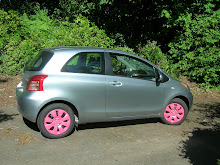
In general, the American girls studying here have been taking the grunt of culture clash in a lot more ways than the American guys. Rules of dress, modesty and decorum which are lost on most 21 year-old American girls are suddenly the strict social norms that we need to comply with. A common point of frustration among the American girls that I have talked to is that it has been hard to interact with Indian students without coming off as too forward. For this reason, the guys in our group have had a slightly higher success rate at branching out and making Indian friends.
This brings me to my discussion on Indian male friendship. Indian man-love may be the biggest cultural difference that I have observed here. Male camaraderie holds a lot of significance and breaks all of the boundaries that Americans have about male affection or emotion. It is not at all uncommon to see two male friends walking hand-in-hand or w
Very jealous of the attention, a few girls and I tagged along with Jamie and two of his Indian friends to go see a Telugu movie last night. Abas and th

Arundhati was certainly a memorable experience, but I personally felt the highlight of the evening was the true exposure to Indian culture that our hosts provided us with, namely, in the form of transportation. Here we thought we had mastered the art of rickshaw riding, but last night we learned how it is REALLY done. The seven of us waited by the street for a rickshaw to take us to the movie theater. Soon enough a rickshaw with two drivers pulled over—this is not uncommon and I have yet to figure out why, I think it’s really just a companionship thing, but many drivers seem to work in pairs. In any case, a rickshaw is just barely big enough to tightly fit three butts in back and maybe two in front if you have doubles-drivers so naturally; we assumed we would be taking at least two rickshaws. Not so apparently. True to local culture, we really stretched the limits of crowding capacity. Each of us exercising our contortion skills and stretching our concepts of personal space, we somehow managed to get FIVE people in the back of the vehicle and FOUR people (two passengers, two drivers) into the front. Let that be a record: NINE people in a rickshaw.


I wonder why they don't get as much funding as Bollywood films? From the way you describe the scenes and plot, they sound as real magnets
ReplyDeleteSounds like a movie with "great reviews" that Dad would want to see.
ReplyDeletedeath by coconuts...that sounds fun!
ReplyDelete